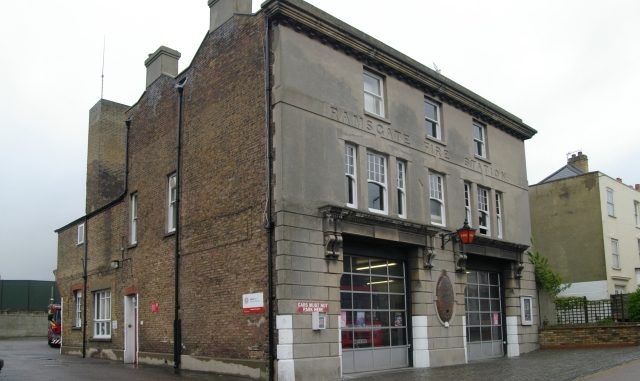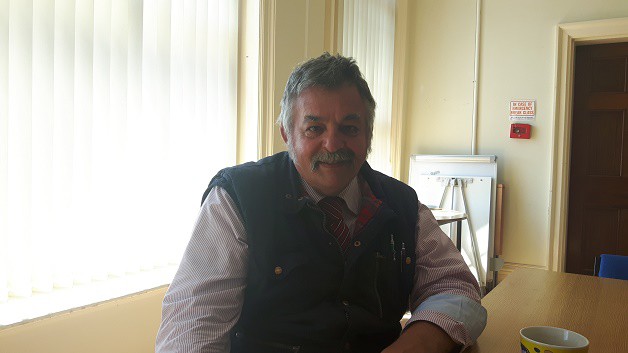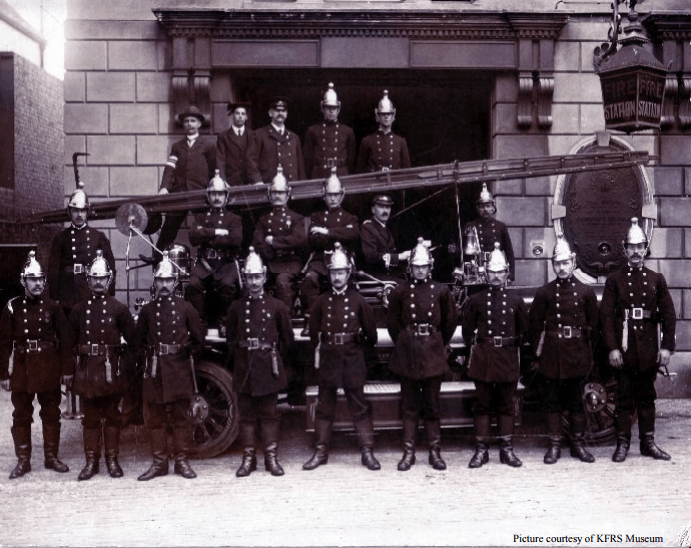
Ramsgate Town Council expects to take over the current fire station building in Effingham Street from next February – and wants residents views on what they should use the space for.
Kent Fire and Rescue Service will be moving out of Effingham Street station which has been their home in Ramsgate since 1905, to the new purpose built site at Newington Road.
The Effingham Street property was originally a private house belonging to Rear Admiral William Fox which was converted by gutting the internals of the building and adding a new frontage.
Originally used for horse drawn steam fire pumps, it has had to garage a series of motorised fire pumps to the present day.
KFRS say the station is no longer fit for purpose and are now near to completing the £8million site on ;and at the former Ramsgate Swimming Pool.
The new station, scheduled to be operational in January, will be a whole-time fire station which means six to eight firefighters will be there round the clock. It will also be the base for a fire engine which is crewed by on-call firefighters when they are needed to attend an incident. There will be training on the site for firefighters.
KFRS will take a copy of the bronze shield attached to the outside of Effingham Street fire station. as a memento of their long association with the old station.
As one era ends another will open when Ramsgate Town Council become the new owner of the building after paying around £350,000.
In the interim the town council is asking residents and community groups for their ideas on the future uses for Effingham Street Station.

Town clerk Richard Styles said: “So far, we have had suggestions to use it for music events and recitals and meeting rooms for various interest groups. Other uses could be for adult education classes, U3A, Art exhibitions, indoor/outdoor craft fairs, community kitchens. We want the community to come up with their thoughts and ideas.”
To register your suggestion email: [email protected] or
Write to: Richard Styles
Town Clerk,
Ramsgate Town Council,
Harbour Parade,
Ramsgate, CT11 8LP
Views can be submitted until January 1.
Find a link to the floor plans here
A century in Effingham Street
In 1905 Ramsgate Corporation bought a house which had been built in the 18th century and grounds in Effingham Street which belonged to Rear Admiral William Fox. The house was converted into a fire station and the town library and Clarendon House girl’s school were built in the grounds.
The station was opened in October 1905 by the Mayor.

In 1915 the Brigade received their first mechanically propelled Fire Engine, Lord Winterstoke (pictured with Ramsgate fire crew above). The appliance was donated to the brigade by Dame Janet Stancomb-Wills who was a member of the town council and a major benefactor of the town. Later, Dame Janet presented a second engine to the Brigade known appropriately as “Dame Janet”.
On June 17, 1917 a Zeppelin raid on Ramsgate harbour destroyed the fish market which was being used as an ammunition store for locally based vessels of the Dover Patrol. For his services on this and other occasions during the war, Chief Officer Johnson was awarded the King’s Police and Fire Service Medal. Sixteen members of the Ramsgate Brigade were awarded the Medal of the Order of the British Empire.
In 1938 with war looming the Auxiliary Fire Service (A.F.S.) was formed, initially as a volunteer force but also under control of the local authority. Ramsgate’s Auxiliaries were based in the ‘Top Garage’ at the top of Effingham Street and a tunnel was dug which linked the A.F.S. base with a building at the rear of the fire station yard.
On August 18, 1941 both the town brigades and auxiliary brigades were merged into the National Fire Service (N.F.S.).
In April 1948, control of the NFS was handed back to the 146 counties of the day. Ramsgate passed to the control of Kent Fire Brigade, which became known as the Kent Fire and Rescue Service in October 2003.
History with thanks to the Sussex History Forum

